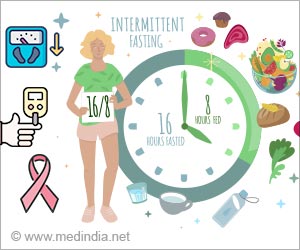four key obesity prevention behaviors – eating five fruits and vegetables, spending less than two hours in front of the TV or computer, at least one hour of exercise and no sugar-sweetened drinks.
Almost no adolescents are meeting all four key obesity prevention behaviors – eating five fruits and vegetables, spending less than two hours in front of the TV or computer, at least one hour of exercise and no sugar-sweetened drinks.
Although some teens are meeting each goal separately, only 9 percent are eating the recommended servings of produce, according to a presentation today at the Pediatric Academic Society meeting in Toronto.“Adolescence is when we start forming lifelong habits, so these results are not encouraging,” said Jennifer Foltz, M.D., a pediatric fellow and an attending physician at the University of Rochester Medical Center. “Even still, small changes can completely reverse these data and adolescents can develop healthier lifelong habits that could prevent obesity.”
Through analyzing data of 4,414 children 12 to 19 years old from the National Health and Nutrition Examination Survey conducted between 1999 and 2002, Foltz and her coauthors found that only 0.4 percent of adolescents meet all four obesity prevention objectives, or 5-2-1-0 goals. On individual objectives:
9 percent ate five or more daily servings of fruits and vegetables 27 percent spent two or fewer hours in front of the TV or computer every day 32 percent had an hour or more of daily physical activity 14 percent had no sweetened beverages.
Most importantly, 41 percent of the adolescents did not meet any of the prevention goals.
The majority (56 percent) of 4,414 adolescents in the survey ate one or less fruit or vegetable a day. Over time, they could add in an apple for a snack or have a salad in addition to a vegetable at dinner, and that would make a big difference, Foltz said. Similarly, if the 22 percent of teens who spend five or more hours in front of a TV or computer traded some of that time for a walk or if the 43 percent who drink three or more servings of sweetened beverages switched to water, the lifelong impact could be huge, Foltz said.
Advertisement
Source-Newswise
LIN/B











